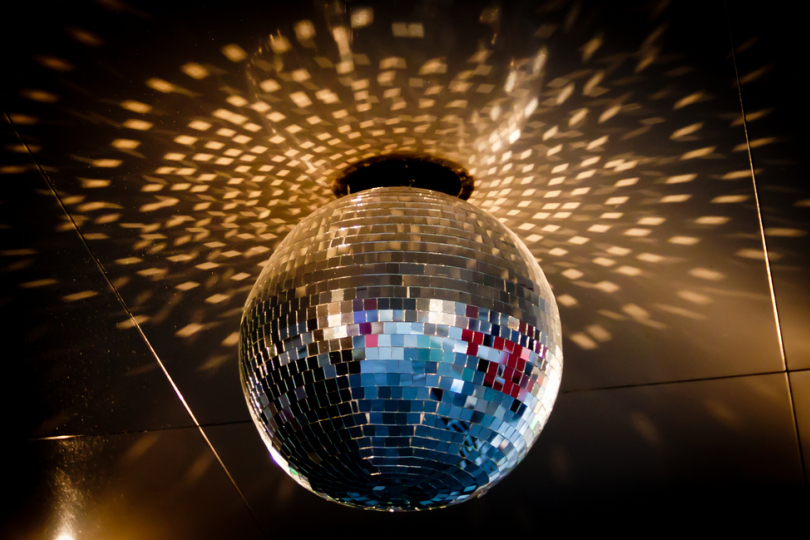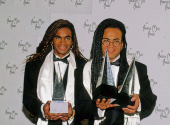
Notes of a Frontwoman #5: My Secret Guilty Pleasure
In today's episode, I'm going to confess something. I'm going to reveal to you a guilty pleasure that has accompanied me since I was fourteen and no one quite gets where that adoration comes from. No one understands why I love '70s disco right alongside rock, metal and related genres. It's just that this ridiculed and often parodied genre, which generated a lot of stereotypes, carries incredible power, pure musicianship and a surge of positive energy. Let's boogie!
Contrasts
Whenever Spotify brings me its regular December "Spotify Wrapped" statistics ( which it accessed by algorithmically stalking my listener preferences), I don't even have to look at my top five genres. Rock comes first, disco second. I've accepted the fact that I'll probably always be a person made up of contradictions – I can bang my head and blast one heavy riff after another on my Explorer guitar on a Saturday night, and then calmly empty the dishwasher while rocking my hips with Gloria Gaynor or Debbie Harry in my headphones on a Sunday afternoon.
Rock and disco were irreconcilable genres in the 1970s, adored by two antagonistic camps. If I were to generalise, rock was mostly listened to by young white straight guys from the suburbs, while disco was the preserve of urban minorities – African-Americans, Latinos, artists, homosexuals and others. While bands like Led Zeppelin, Black Sabbath, and Aerosmith filled stadiums (even before they came to be seen as "dinosaurs"), disco emerged from a vibrant underground: small, secret, packed-to-ceiling clubs where exciting, pulsating music and seductive, energetic dancing provided a distraction from everyday life for those otherwise on the fringe of society.
The greatest years in hell
Disco has its roots in funk and soul. It's never been pinpointed exactly which disco song was the first one, but most picks include The Temptations and their playful "Cloud Nine" (1969), which almost defined the upcoming disco hi-hat, and the psychedelic "Papa Was a Rollin' Stone" (1972), a seven-minute opus. In newly emerging clubs, the dance floors were filled with visitors dancing to songs that weren't disco yet, but the genre had already been born in the heads and hearts of the dancers. And it was no wonder.
In newly emerging clubs, the dance floors were filled with visitors dancing to songs that weren't disco yet, but the genre had already been born in the heads and hearts of the dancers. And it was no wonder.
In the early 1970s, the ideals of the hippie movement had crumbled into bitter disillusionment, the Vietnam War was hitting the country hard and New York was plunging into a deep crisis that manifested in filth, drugs and crime. One example for all: Times Square, now full of tourists who buy overpriced coffee from Starbucks and gaze at glowing ads promoting Disney musicals, was a hotbed of prostitution, ubiquitous seedy porn theatres, squalor and drugs in the 1970s. It stands to reason that in this bleak environment and troubled times, people wanted and needed the euphoric freedom of disco before disco was even named and defined as a genre. This occurred in 1974 when Billboard could no longer ignore the dance craze and gave it its own chart.
Four on the floor
Tempo at heart rate after a couple of cocaine lines, rhythm 4/4. Often up to 64 tracks of meticulously produced and arranged music, dominated by massive orchestral parts, and combining funky grooves of upbeat drums with absolutely fantastic bass lines. Add a jangling guitar played with a light wrist, often with the wah-wah pedal, filling the space between the drum and bass strikes. Latin percussion – bongos, tambourines, rumba balls. Clapping to the beat, whistles. Analogue synthesisers. And reverbed vocals floating above it all. That's a generalised musical summary of disco songs.
The DJs very quickly figured out that the point is to keep people on the dance floor as long as possible, so the maxi single was born – roughly eight-minute mixes of songs, deliberately arranged to make the records easily follow each other without dropping the beat. Sound systems and lights were improved and stimulants were as accessible as a packet of chewing gum so one could dance the night away.
Disco singles were leading the charts, clubs were always full and the money kept coming. And where there's money, there's interest in having more of the product to keep the money flowing. So new hits were carefully produced and arranged in the studios and the best way to create such a disco hit was found.
Disco art
Disco has three fundamental pillars: groove, hook and layers. So a manual to a proper disco song would look more or less like this:
- Set your metronome to about 128 to 132 BPM and program a simple drum pattern – bass drum, snare, hi-hat. The bass drum can come either on the first and third beat or on the quarter notes, the snare on the second and fourth beat, the closed hi-hat on the eighth or sixteenth notes, ghost notes are welcomed. It should be playful because while the bass drum and snare keep the groove on the ground, the hi-hat makes it light.
- Bassline played with fingers. You can start with octaves and maybe add some funky ornaments in the fourth bar. Please, make sure it's major. Disco is happy, not depressed.
- Throw in some percussion to give it a latin swing. Don't be shy, it'll make a real party downstairs.
- We've already talked about the guitar, so get it in there. Unlike in rock music, it shouldn't dominate, but complement in a way that's significant enough to make you miss something without it.
- Strings – not too much and not too little. Nothing complex, no symphony, just a few hymnic chords where it fits; ideally in the build-up moments.
- The hymn-like quality of the strings must be complemented by the urgency of the winds! They should talk to the strings, not beat each other up, otherwise the presence of both sets of instruments is counterproductive. We layer, we don't overload.
- The almost-finished cake needs some embellishments, which can be achieved with simple motifs played on a ringing synth. A piano can also be used to support the chords and give them a thunderous massiveness.
- Vocals are a special category. There are several paths to take: orgasmic chants of disco divas, crooked male soul voices, Sylvester-like falsettos, ABBA harmonies. But the melody has to be easy to remember, definitely place "aaaahh", "oooh", "uuuh", "yeeeah", "mmmm" and other interjections somewhere.
- The lyrics don't have to be very deep. You will get away with clear sexual double entendres, odes to disco, dancing and dancers or happy and unhappy loves ending with the last flash strobe.
- As you put it all together, remember the importance of the build-up, the exciting graduating section that clearly leads into the chorus. This should explode like a... well, let's face it, disco is a kind of musical sexual act. Usually, the song is built like a sinusoid: intro, hook, verse, build-up, euphoric chorus, hook, verse, build-up, euphoric chorus, hook... and so on until the outro, which is smoothly followed by the next single.
- In case you don't know how to spice up your new disco single, try switching off the layers halfway through the song until you end up with just the bass drum, at which point you start adding layers again. Recommended by 10 out of 10 Giorgios Moroders!
Unfortunately, with a freshly mastered hit song in your hand, you had an even harder job in the '70s – getting someone to play it. Only when the single was a success in the clubs, it made it to the radio. So the audience itself became the arbiter of taste – the DJ served them the new single (if he liked it or if you bribed him enough with money, drugs or sexual activities) and then waited for the reaction of the polyester crew. If they responded and enthusiastically danced on, the single had potential. If the dancers left the dance floor in droves and went to powder their noses instead, all your efforts were for nothing and you could stick the tapes... you know where.
Mainstream as a killer and a cause of bad taste
Disco, which bubbled under the surface intensely in the early 1970s, eventually exploded like a pressure cooker and, thanks to the film Saturday Night Fever, flew into the mainstream and ruled it unwaveringly for three years (c. 1976-1979) – and then died almost overnight. The sudden mass consumption and homogenisation of the genre in the US and around the world led to an oversaturation of listeners: even if you just picked up the toilet seat, you were hit with disco and with it by the newly emerging bizarre ideas like "Disco Duck".
No wonder that by the end of 1980, people were fed up with disco, and from pompous dance anthems they switched to minimalist new wave and it was all over. However, disco laid the foundation for other sub-genres and who knows where the kings of dance music would be today if Donna Summer hadn't released her synth-masterpiece "I Feel Love" in 1977.
In the last decade, disco has experienced a renaissance, modern artists are openly drawing from it and I can say that these songs always make me happy. Despite all its flaws, stereotypes, ridicule, occasional excess and superficiality, disco always puts a smile on my face, infuses energy into my veins and evokes emotions, which is exactly what music should do. And it's also great for vacuuming.
To close, I'm sending you my Spotify playlist called "Anything Went". It's a collection of my favourite disco songs – like me, you can imagine yourself dancing with Gia Carrangi at Studio 54 and while the beat never stops, feel for one night that you can do anything in the world if you want it bad enough.
If you have found an error or typo in the article, please let us know by e-mail info@insounder.org.




